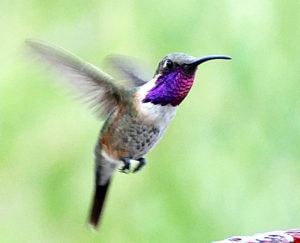DIY Big Year: 10 Long Weekends with Alaska and Hawaii
Oct 16, 2017 | by Greg Miller
And now we are going to do the same thing we did in the last post. Only this time we are going to throw Alaska and Hawaii into the mix. I’ll get right into it.
The Working Person’s Big Year Plan: 10 Long Weekends with Alaska and Hawaii
- Cameron County, Louisiana / December 15-21 / new species 149 / total 149
- Hidalgo County, Texas / May 1-7 / new species 76 / total 225
- Cochise County, Arizona / June 1-7 / new species 55 / total 280
- Clallam County, Washington / December 1-7 / new species 45 / total 325
- Kauai County, Hawaii / September 1-7 / new species 35 / total 360
- Flathead County, Montana / June 8-14 / new species 27 / total 387
- Galveston County, Texas / April 22-30 / new species 24 / total 411
- Monterey County, California / September 8-14 / new species 18 / total 429
- Albany County, Wyoming / July 15-21 / new species 15 / total 444
- Barnstable County, Massachusetts / August 8-14 / new species 14 / total 458
Cool. A total of 458 species? Awesome. A total of 660 species have been reported to eBird in these locations during these weeks. So with this itinerary I am hoping you are going to be able to see nearly 70% of all the species seen over the last 10 years in eBird. And only with 2 full days of birding per long weekend!
Remember, these week trips were chosen by the highest number of easy species possible by location and calendar date. I found that choosing them by highest number of species possible first will net about 10% more total species than by choosing them in calendar sequence. But in real life you are not gonna do your big year in this order. You live by calendar sequence. So here are the same trips above by date.
The Working Person’s Big Year Plan: 10 Long Weekends with Alaska and Hawaii by Date
- Galveston County, Texas / April 22-30 / 126 new species / total 126
- Hidalgo County, Texas / May 1-7 / new species 52 / total 178
- Cochise County, Arizona / June 1-7 / new species 62 / total 240
- Flathead County, Montana / June 8-14 / new species 51 / total 291
- Albany County, Wyoming / July 15-21 / new species 24 / total 315
- Barnstable County, Massachusetts / August 8-14 / new species 19 / total 334
- Kauai County, Hawaii / September 1-7 / new species 34 / total 368
- Monterey County, California / September 8-14 / new species 28 total 396
- Clallam County, Washington / December 1-7 / new species 34 / total 430
- Cameron County, Louisiana / December 15-21 / new species 28 /total 458
Notice once again that the new species totals are different between the first list and the second. That is because a bird is listed as “seen” the first time it meets the 7% criteria on the itinerary. I call it a first encounter. Some common birds will be seen on multiple trips. During a Big Year these birds found on multiple trips give a birder multiple chances. But once you see one, you don’t need another. You don’t need to see it again.
But, after this master list of trips is formed, wouldn’t it best to take a target species and assign it to the trip that has the best probability compared to all the other trips? Yes. It would be. In the next post I will deal with issues of duplication of effort and Big Year efficiency. In short, I want to make you as efficient as possible when you execute this plan.

































